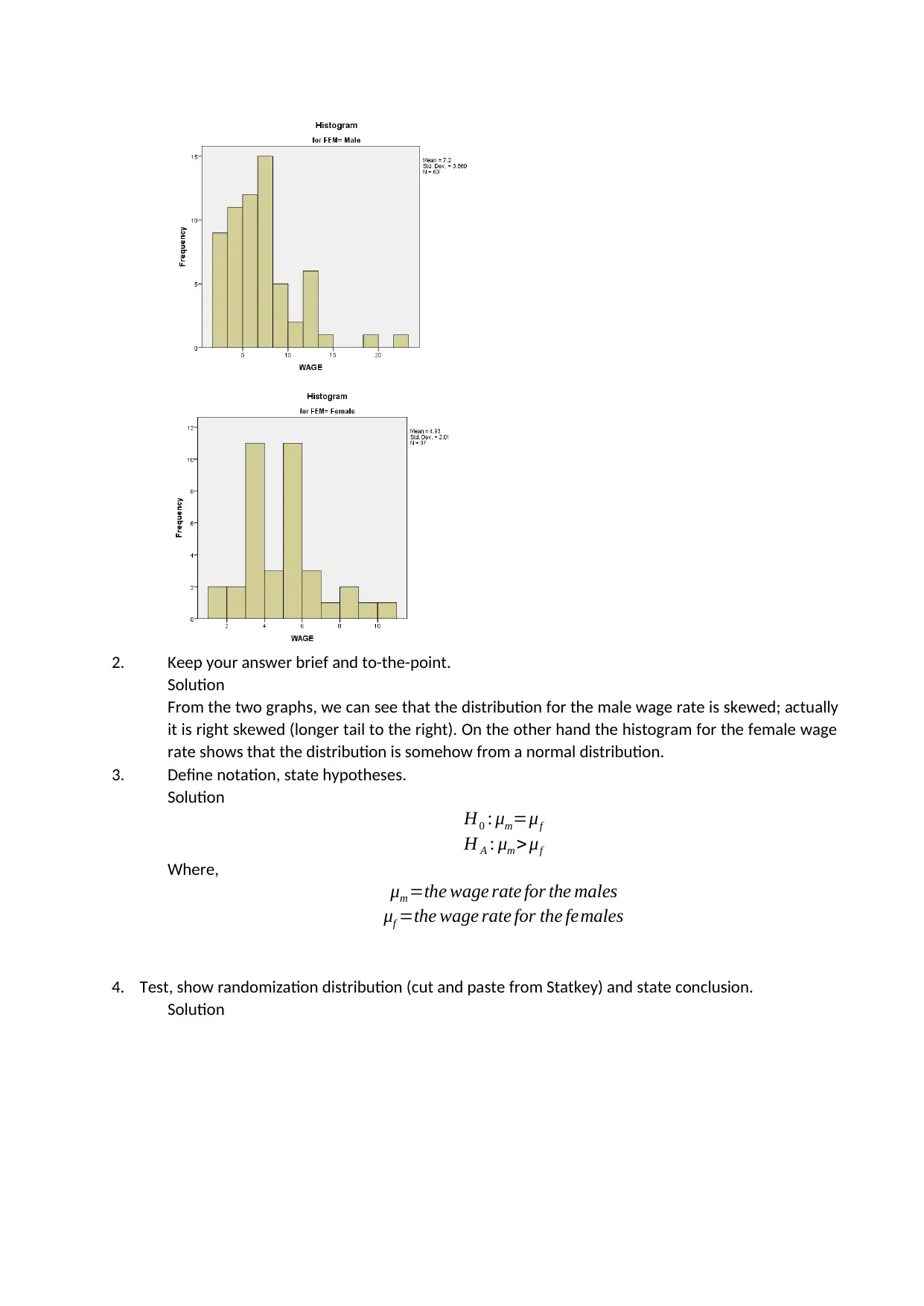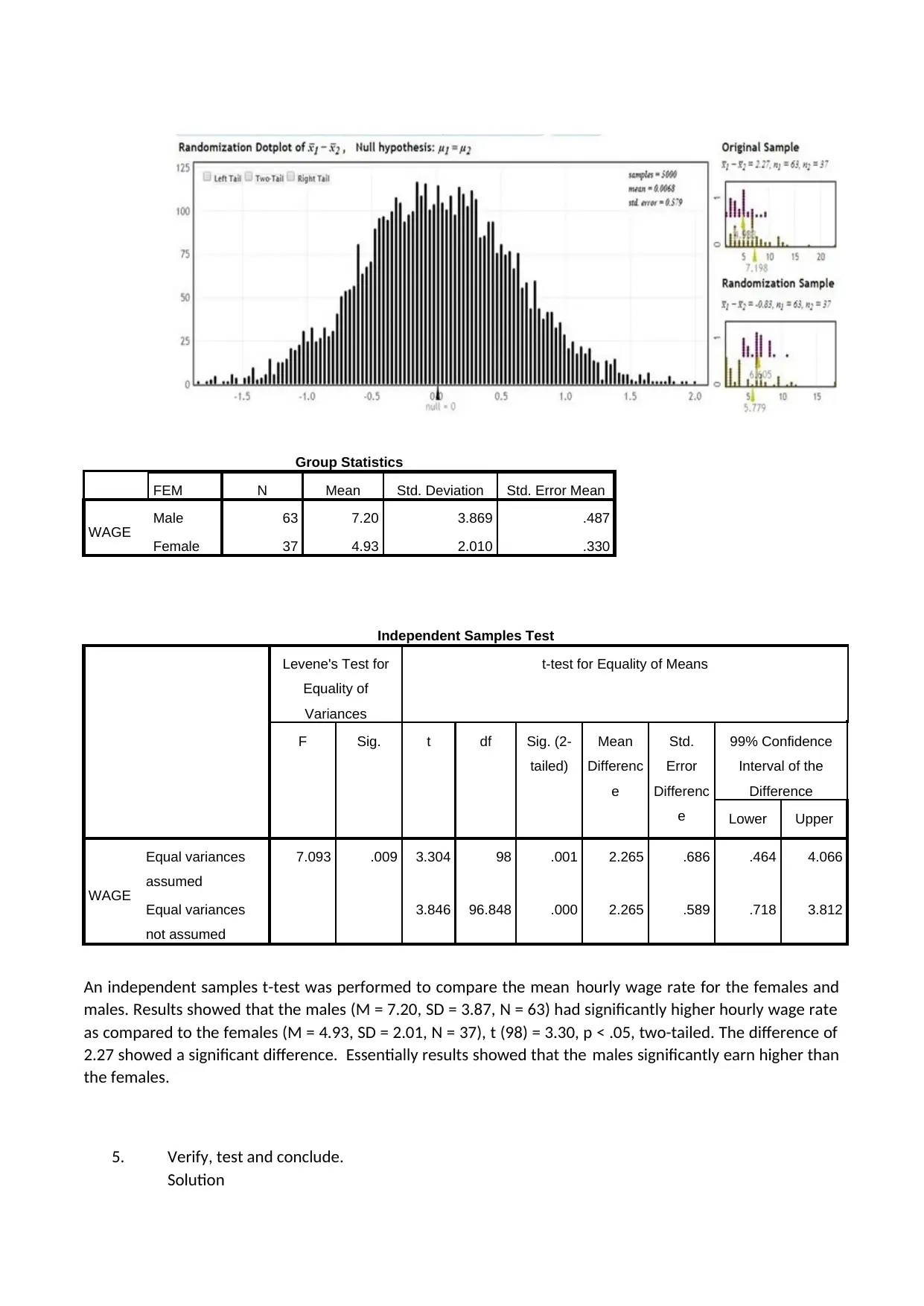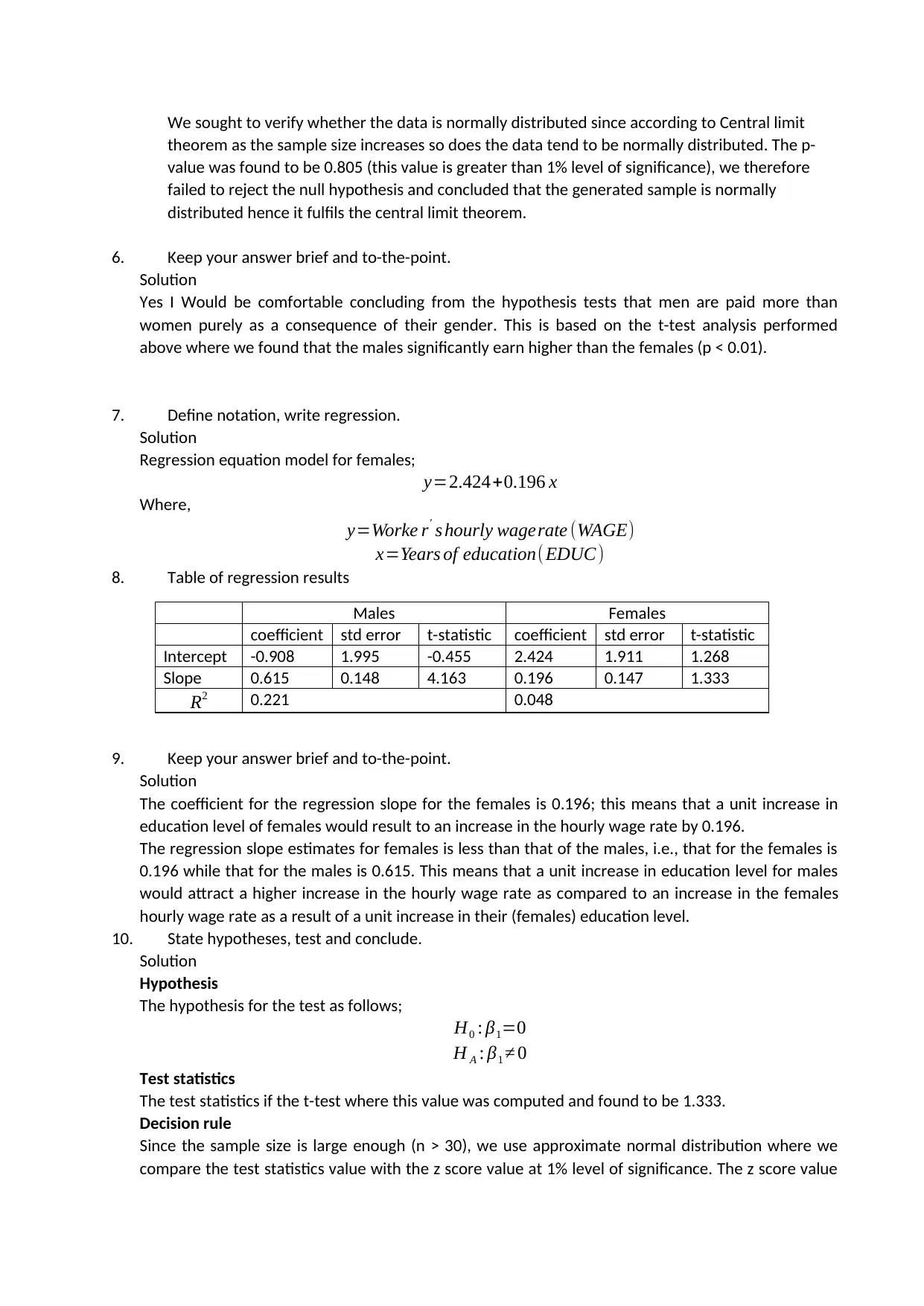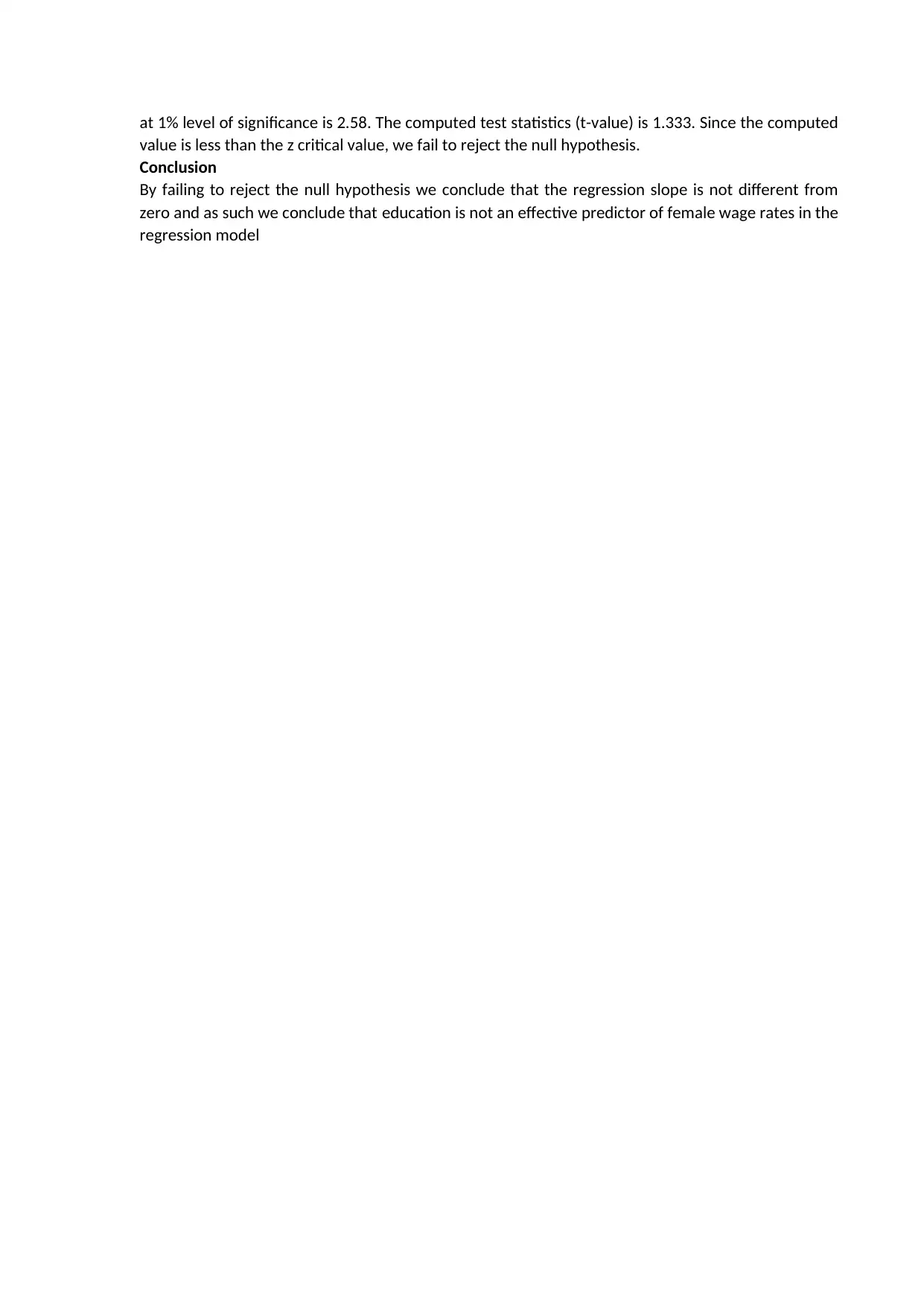Statistical Analysis of Wage Rates: Homework Assignment Solution
VerifiedAdded on 2021/06/18
|6
|753
|51
Homework Assignment
AI Summary
This statistics homework assignment analyzes male and female wage rates using various statistical methods. The solution begins with an observation of the wage rate distribution for both genders, identifying right-skewed distribution for males and a near-normal distribution for females. It then defines notation and states hypotheses, followed by an independent samples t-test to compare the mean hourly wage rates, which revealed that males had significantly higher wage rates. The solution also addresses the Central Limit Theorem, concluding that the sample is normally distributed. Furthermore, the assignment includes the development and interpretation of regression equations for both males and females, analyzing the impact of education level on wage rates and testing the significance of the regression slope. The analysis demonstrates the application of statistical tests and models to draw meaningful conclusions from the data.
1 out of 6













![[object Object]](/_next/static/media/star-bottom.7253800d.svg)